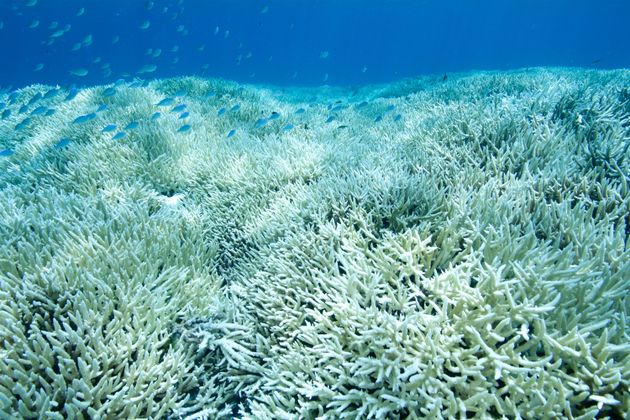While the news has been filled with the types of heatwaves that we experience above sea level, the fact is the ocean suffers from the phenomenon as well.
In fact ocean heatwaves have roughly doubled in number over the last three decades and are already looking to become even more common and intense as the planet warms, research has found.
Scientists recorded all-time high seawater temperatures off the San Diego coast earlier this month and between 1982 and 2016 and the number of heatwaves in the oceans roughly doubled, according to the study led by Thomas Frolicher, a climate scientist at the University of Bern in Switzerland.
Prolonged periods of extreme heat in the oceans can damage kelp forests and coral reefs, and harm fish and other marine life.
To make matters worse, the oceans both absorb and release heat more slowly than air. This means that most marine heatwaves can last for at least several days — and some for several weeks, Dr Frolicher said.
“We knew that average temperatures were rising. What we haven’t focused on before is that the rise in the average comes at you in clumps of very hot days — a shock of several days or weeks of very high temperatures,” said Michael Oppenheimer, a Princeton University climate scientist who was not involved in the study.

Dr Frolicher said the trend will only further accelerate with global warming.
His team defined marine heat waves as extreme events in which sea-surface temperatures exceeded the 99th percentile of measurements for a given location.
Many sea critters have evolved to survive within a fairly narrow band of temperatures compared to creatures on land so even a tiny increase in the temperature can be highly disruptive.
Some free-swimming sea animals like bat rays or lobsters may shift their routines. But stationary organisms like coral reefs and kelp forests “are in real peril”, said Michael Burrows, an ecologist at the Scottish Marine Institute, who was not part of the research.
In 2016 and 2017, persistent high ocean temperatures off eastern Australia killed off as much as half of the shallow water corals of the Great Barrier Reef — with significant consequences for other creatures dependent upon the reef.
“One in every four fish in the ocean lives in or around coral reefs,” said Ove Hoegh-Guldberg, a marine biologist at the University of Queensland. “So much of the ocean’s biodiversity depends upon a fairly small amount of the ocean floor.”
The latest study in the journal Nature relied on satellite data and other records of sea-surface temperatures including from ships and buoys.
It did not include the recent record-breaking measurements off Scripps Pier in San Diego — which reached 79.5F on August 9 — but Dr Frolicher and Dr Art Miller, of the Scripps Institution of Oceanography, said the event was an example of a marine heatwave.
Dr Miller said he knew something was odd when he spotted a school of bat rays — which typically only congregate in pockets of warm water — swimming just off the pier earlier this month.
Changes in ocean circulation associated with warmer surface waters will likely mean decreased production of phytoplankton — the tiny organisms that form the basis of the marine food web, he said.
Marine biologists nicknamed a patch of persistent high temperatures in the Pacific Ocean between 2013 and 2016 “the Blob”.
During that period, decreased phytoplankton production led to a cascading lack of food for many species, causing thousands of California sea lion pups to starve, said Dr Miller, who had no role in the Nature study.
“We’ve repeatedly set new heat records. It’s not surprising, but it is shocking,” he said.